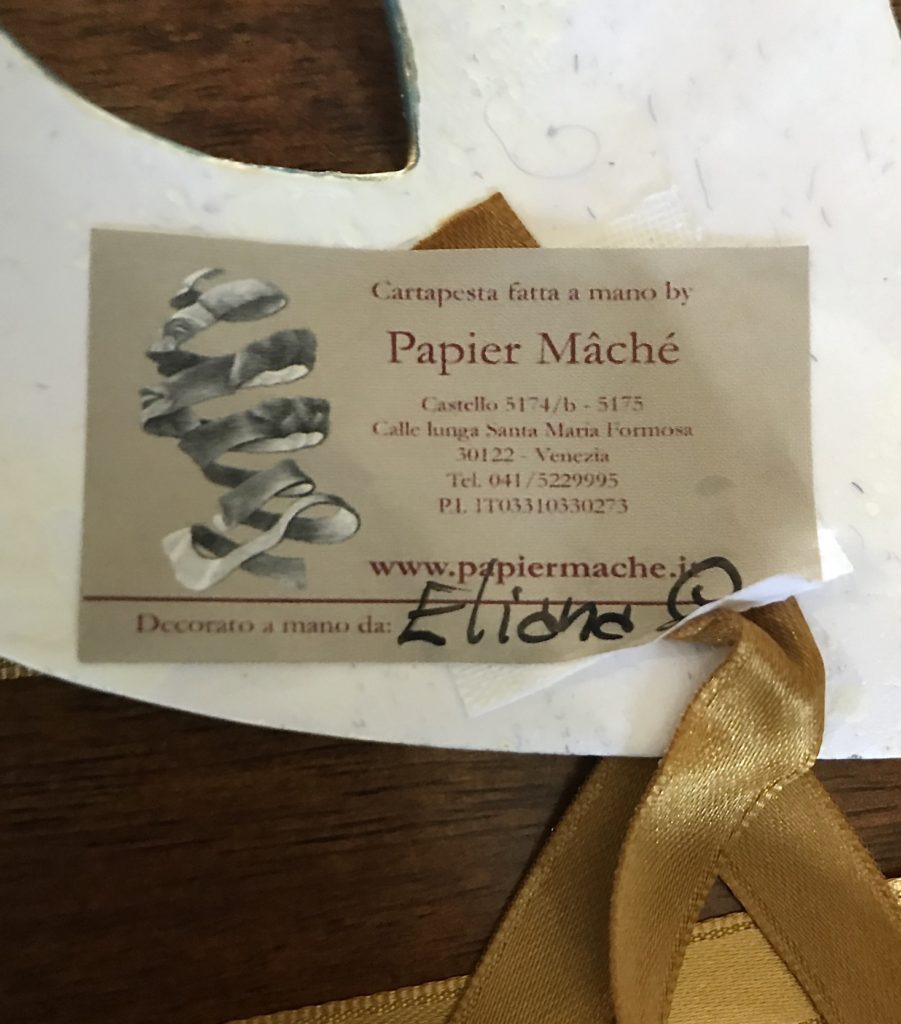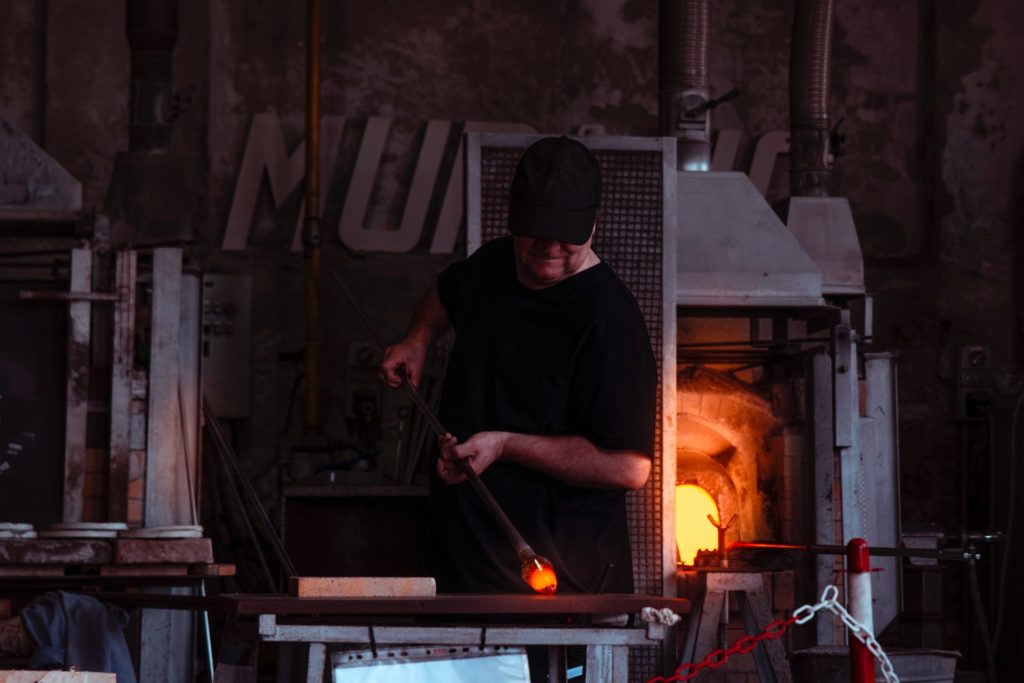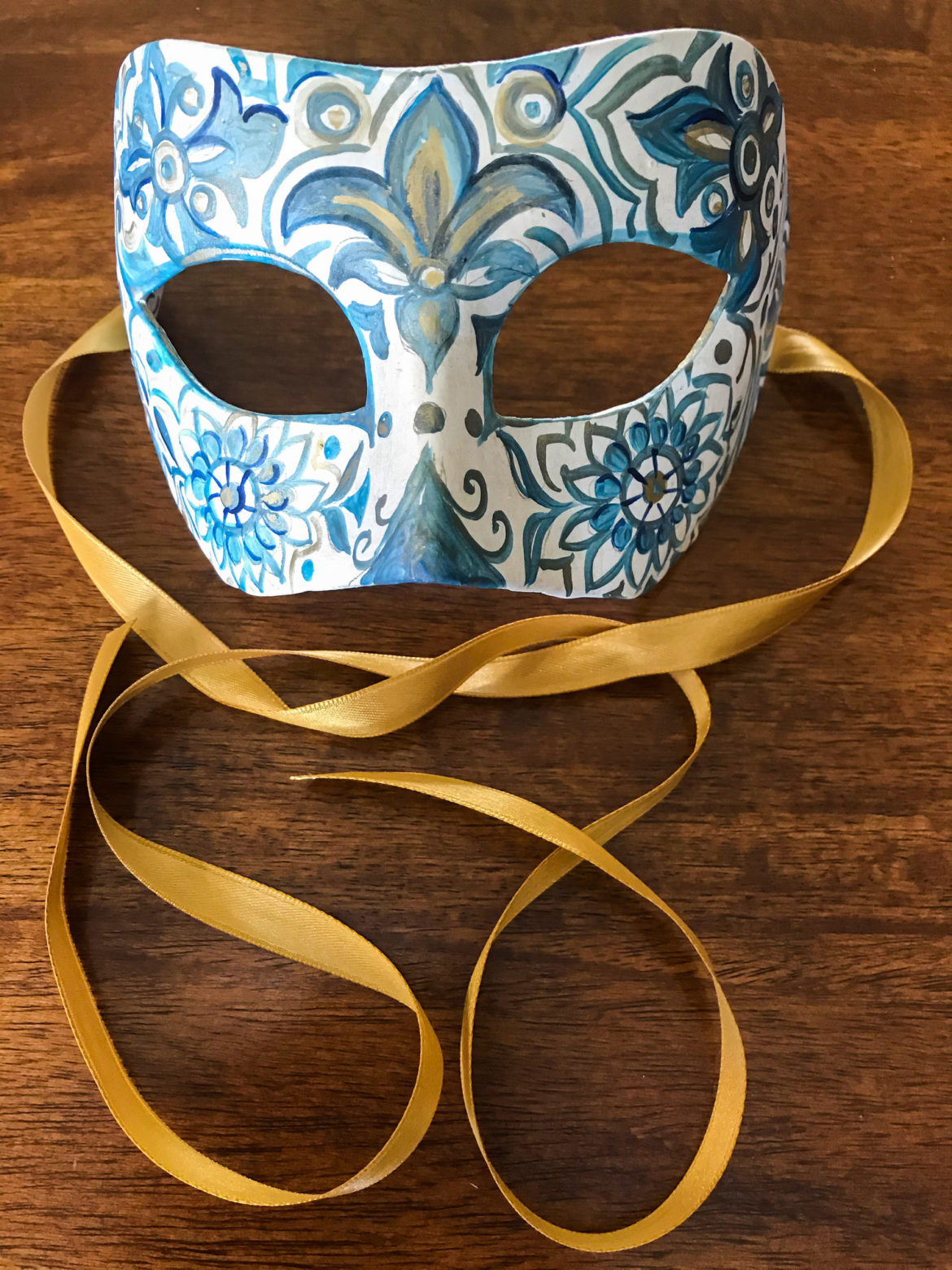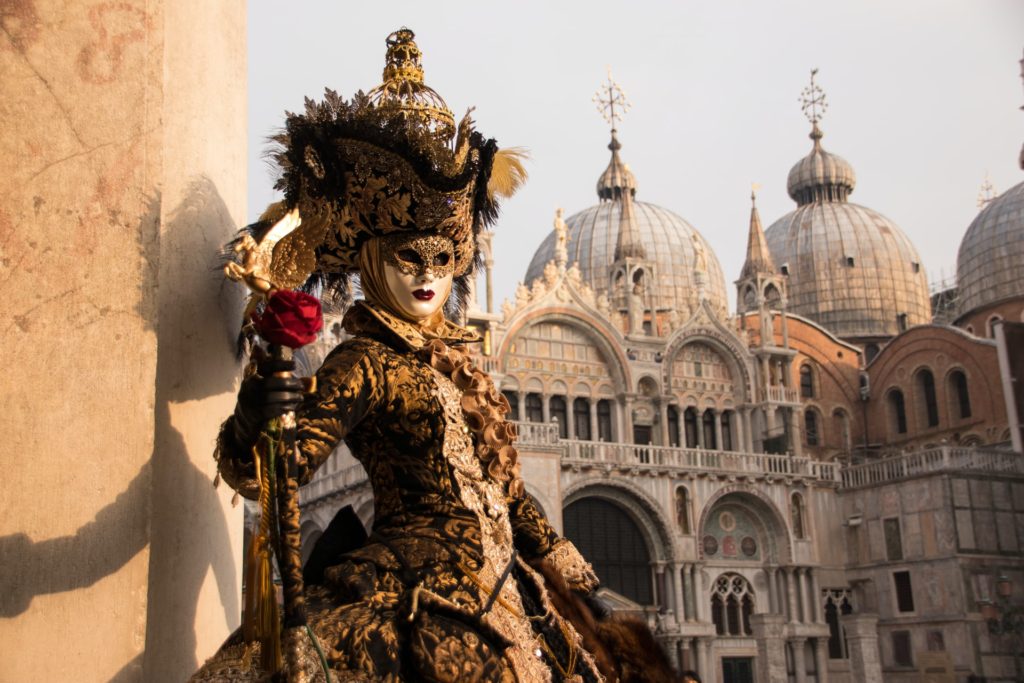Venice is well know around the world for many art forms. Venetian paper mâché masks, Burano lace, Murano Glass, and marbled paper are in high demand for their quality and beauty. With the increase in a worldwide demand and mass tourism, there has been a huge increase in non-authentic goods being sold. This is something you see everywhere though and isn’t exclusive to Venice. Approximately 70% of the “Murano” Glass sold in Venice is counterfeit. So, how do you know if the crafts you’re buying in Venice are real?
In recent years the city has been taking steps to restrict and regulate shops selling knockoffs. This is all in an attempt to preserve the cultural heritage and traditions of Venice. Things like the “Made in Italy” mark will only appear on items that have been made in Italy from start to finish. Shops may soon be required to display a sign in the window stating where the products are made.
I love collecting art made by locals when I travel. Back home I have a wall filled with paintings and carvings from around the world. The addition I wanted to my collection from Venice was a Venetian mask. We were also on the hunt for a pendant and earrings from Murano. But, I wanted to make sure I was buying the real thing. So I have put together a few little tips on how to know if the Venice souvenirs you’re buying are real.
The History of the Masks
The elaborately decorated masks are now associated with the Carnevale di Venezia, Carnival of Venice. This celebration runs for two weeks in February and features masquerade balls, costumes, art shows, and musical performances. The Carnival dates back to the 12th century. The celebration was outlawed in 1797while Venice was under the rule of Rome and later Austria. The carnival was then brought back in 1979 after a long hiatus. In the beginning, Venetians were allowed to wear masks in public for around eight months out of the year. Eventually, laws restricted the wearing of masks to only during the carnival season. Carnival season ran from the Festival of Santo Stefano, Saint Stephen’s Day on December 26, and the beginning of Lent, Shrove Tuesday at midnight.
There is debate as to why wearing masks became such an important part of everyday life. One suggestion was that it was in response to the rigid class hierarchies, Venice had one of the toughest in Europe. However, during carnival season the sumptuary laws were put on hold, these laws dictated your clothing, food and luxuries based on your class. Venetians could dress however they liked. Putting on a mask meant you could be a whole new person. Mask makers were well respected for their craft; but, the fall of the Republic caused the fall of this traditional craft.
Making a Mask
A lot of work goes into making these masks. The masks are still traditionally made from paper mâché. Layers of paper mâché are built up on a clay or plaster form to shape the mask. Each layer takes about 24 hours to dry. Using paper mâché allows for the masks to be lightweight and breathable. After drying, the mask is buffed to smooth the edges and painted. We popped into a great shop on Calle Lunga Santa Maria Formosa called Papier Machè Venezia. In the shop you could see the artists work benches and see what projects they are currently working on. The artist in the shops are incredibly knowledgeable and able to answer any of your questions and help you pick the right mask for you. Masks range in size and design with plenty of options for traditional designs. I opted for a Columbina style mask. A mask like mine would take approximately three hours to paint.

Buying a Mask
Buying a mask can be a bit of a daunting process, especially if you are indecisive like me. Almost every street will have a shop selling masks but according to some guides there are only about five shops that sell authentic handmade masks. So how do you tell the difference? Well, one of the first things to look at is the decoration. Many of the masks will take similar shapes as these are the traditional shapes, Columbina, Bauta, plague doctor etc. But each shop will have it’s own unique style of decorating the masks. Just like painting on a canvas, each artist has a signature style and no two masks will be the same. If you keep seeing the same masks over and over, they are most likely factory made. These factory made masks are produced by machines in bulk and sold in many shops across Venice. Also observe the quality of the decorations, authentic masks often use jewels or gold and silver leaf.
The next thing to look at is the materials. You’ll be able to tell the difference when you hold a mask. A paper mâché mask will feel very light, yet durable, and it’ll feel a little rough from the dried paper. Factory made masks are often made of plastic. This is a good way to tell right away if the mask is real or not.
Of course another big indicator is always the price. An authentic mask won’t come cheap. But when you think about the amount of work that goes into creating a mask, the quality of the products and the fact that it’s all done by hand you understand the price. The mask I purchased cost around 60-70€. The minimum price I saw was around 30€. The quality item with have a higher price tag. If you see anything priced less than that, especially if it is a larger piece, it is safe to assume it’s a knockoff. As I was purchasing my mask the artist helped me decide which colour of ribbon I wanted and wrap everything up. The final step was a sticker on the back with the shops details stating that it was handmade with paper mâché and hand decorated. She explained to me that the sticker was part of the new steps put in place by the government to identify authentic Venetian products.

The History of Murano Glass
Murano is a group of islands in the Venetian Lagoon that are linked by bridges. A short ferry ride from Venice itself Murano has a long history. It was originally a fishing port and also produced salt. Murano gained its reputation for glass making after 1291. The Republic feared a fire would break out from one of the furnaces and destroy the majority wooden buildings in Venice. To prevent this, the glassmakers were ordered to move their shops to Murano.

In the following century exports from the island began and this cemented Murano’s reputation for some of the finest glass and mirrors. The glassmakers of Murano developed and refined many sought after techniques in the glass trade. This gave Venice the monopoly on high quality glass. Glassmakers became prominent citizens of Venice. They received immunity from prosecution by the state, were allowed to carry swords and even saw their daughters married off into Venice’s most affluent families. This came at a cost for them though. To keep the monopoly on the industry and the technique of their trade secret, glassmakers were forbidden from leaving the Republic. They partially lost this monopoly though at the end of the 16th century when some glassmakers took the risk and left the island to set up furnaces across Europe letting their secrets be known.
Buying Murano Glass
A lot of the same tips apply to buying authentic Murano Glass as the paper mâché masks. One of the key thing to look for though is the “Vetro Artistico® Murano” trademark sticker. This tamperproof sticker was established by law to guarantee that you are getting a product crafted on Murano by a master glassmaker. The sticker also features a borsella, a tool used in glassmaking and the producers identification code. Both the borsella and the “Vetro Artistico® Murano” writing are made of gold leaf.

Authentic Murano Glass often features imperfections or is asymmetrical. This is because when it is made it is made by hand without exact measurements or machines. This is why you could be looking at two glasses from the same collection but there are slight variations between the two of them. Again you’ll want to pay attention to the price. Murano Glass is a luxury item. To produce the bold colours and patterns in the glass, glassmakers use various minerals including alexandrite, gold and silver. If the price is low it’s probably using imitation products.
This is part two of my feature on Venice. Last week I talked about riding through the canals in a gondola, you can read that here, and next week I’ll be going over my full trip to Venice. To see more photos and stay up to date with new posts and all my other upcoming projects you can follow along on Facebook, Twitter, Instagram, and Pinterest.
See you next week!

